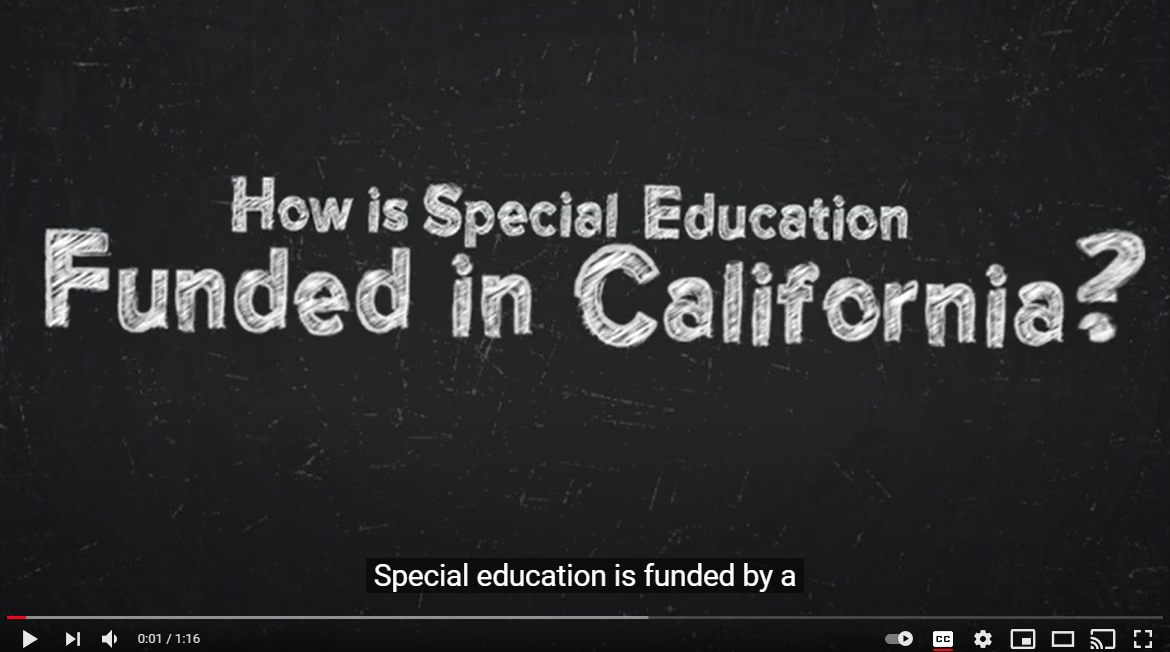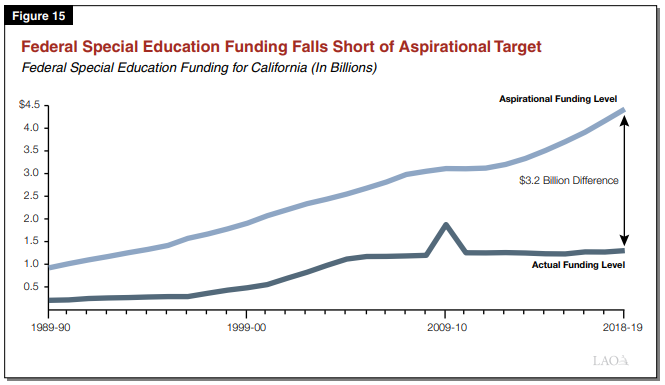Fiscal Resources and Support
Funding for special education has historically been far less than the identified needs. The fiscal support for special education programs and services is provided through a combination of local, state, and federal revenue sources. Federal revenues have remained at less than half the federal commitment for many years, and the gap continues to widen between the federal promise and actual funding, as shown by the Legislative Analyst's Office chart at right (link below). State entitlement funding has had significant deficits, leaving district general funds to make up the difference. The state’s method of allocating funds for special education shifted from a classroom-based model to a type of categorical per capita funding, using the total average daily attendance (ADA) of a SELPA as the basis for allocations. Several fiscal and administrative benefits have been enhanced by the change from LEA funding to SELPA-wide funding, including (1) improvements in funding equity, (2) flexible funding allocations within SELPAs, (3) increased accountability to parents and the public, and (4) coordinated staff development programs. Sustaining high-quality special education programs requires teamwork, partnership, and collaboration. The SELPA Administrators of California is a steady partner with the Coalition for Adequate Funding for Special Education, and each entity works to break down complex information for directors and business officials. Some summaries and resources are shared on this page.
 The Coalition for Adequate Funding for Special Education
The Coalition for Adequate Funding for Special Education
The Coalition for Adequate Funding for Special Education is a collective of over 80 member educational agencies who meet monthly to broaden understanding about recent legislative, political, and economic trends that will impact special education funding. This Coalition, which is supported by School Services of California, is responsible for creating and analyzing special education finance data, supporting member questions on complex topics, providing bill tracking and legislative and budget advocacy, and keeping members apprised of the most up-to-the-minute information in all aspects of special education finance.
Fresno County SELPA
Eddie Davidson, Director of Fiscal Student Services, SELPA/Special Education for the Fresno County SELPA, has done a remarkable job of breaking down complex special education finance processes via a Model SELPA Finance Website. The site includes information about funding sources, allocations, uses of funds, reporting, and providing an FAQ sheet. He has even built a library of instructional videos on SELPA finance for his SELPA's member LEA business officials and has made all available to the public. We are so grateful for what he has put together and is willing to share.
Legislative Analyst's Office, State of California

Overview of Special Education in California, produced by the California Legislative Analyst's Office in November 2019, provides comprehensive information about the state of special education finance in California.
Additionally, the LAO website features four short instructional videos that are a must-watch. Each of the following videos is less than two minutes in length and gives a solid overview of the structure of special education and funding in California.
What is Special Education?
Who Receives Special Education?
How is Special Education Organized?
How is Special Education Funded?
Other Resources
California's Special Education Funding System Creates Challenges and Opportunities for District and Charter Schools, Bellwether Educational Partners, May 2019
Special Education Finance Basics, for New Directors Training, by Mary Samples, October 2017

